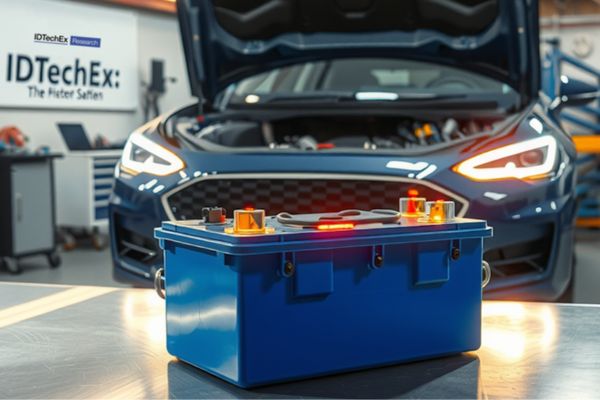Second-life EV battery assessments can be carried out using diagnostic tools and software, with some newer approaches taking just ten minutes instead of a few hours with regular cycling methods. IDTechEx’s report, “Second-life Electric Vehicle Batteries 2025-2035: Markets, Forecasts, Players, and Technologies“, explores how second-life battery repurposing and accurate battery health assessments will become increasingly important alongside the growing availability of end-of-life (EOL) EV batteries.
EIS technology and ReJoule’s latest developments
Estimations about a battery’s state of health (SOH), charge, and power, can be retrieved non-invasively through a process called electrochemical impedance spectroscopy (EIS). ReJoule, a battery analytics company discussed in IDTechEx’s report, have combined this process with machine learning algorithms and statistical modeling to source battery data quickly. This approach to acquiring the data also does not risk aging the battery, meaning it is a useful tool for the second-life battery market.
ReJoule’s new battery grading technology, currently being tested, will allow EV batteries to remain inside the vehicle for a more efficient and cost-saving process. This upgraded version of testing will use the same EIS technology through the EV charging port, with a voltage up to 500V. The ability for this technology to be used at automotive dealerships and service workshops will allow it to be more easily accessed for quicker and hassle-free results in more easily accessible locations. Should the battery be fit for a second-life purpose, it can then be shipped off having already been tested, saving further costs with less back-and-forth shipping and testing.
A cloud software platform developed by ReJoule can store data and allow customers to view the metrics of a battery’s health accumulated and stored over time from multiple testing data, and how to best manage it going forward. A battery grade is also assigned from A to F, to provide insight into the SOH of the battery and whether the parts could be remanufactured or replaced to have its first life extended. This is likely possible with grade A and B batteries, though grade C and D are more likely to be used for second-life applications that require less stress on the battery, such as for an uninterruptible power supply (UPS).
EU battery passport and risks to repurposers
The introduction of the EU Battery Passport could potentially lead to repurposing companies losing out on market share in the EOL battery testing market – a situation not helped by the EU Commission currently seeming more focused on collecting batteries for recycling rather than repurposing.
Automotive OEMs may also begin to take responsibility for collecting their own battery data for repurposing as a result of the Passport integration, which they may do by collaborating with testers. Following this, they could then decide to develop second-life battery storage technologies in-house rather than involving repurposers at all, showing how repurposers could lose out on potential business. This is, however, a rather nuanced and potentially complicated shift in player activity that is yet to be widely seen.
IDTechEx reports, however, that repurposers are still expected to be the main users of advanced battery testing and grading. OEMs may decide to pass on read-only battery management system (BMS) data, from which repurposers can determine state-of-health, rather than having to decrypt the BMS data and use their own advanced proprietary battery grading technologies. The battery management system data can then be utilized to decide whether a battery is fit for second-life use, by using key metrics to determine SOH.
IDTechEx’s report “Second-life Electric Vehicle Batteries 2025-2035: Markets, Forecasts, Players, and Technologies” covers multiple other companies operating within the battery repurposing sector, including looking at their technology, location, and speed and accuracy of technologies, as well as covering the different market barriers and benefits for battery testers and modelers


















